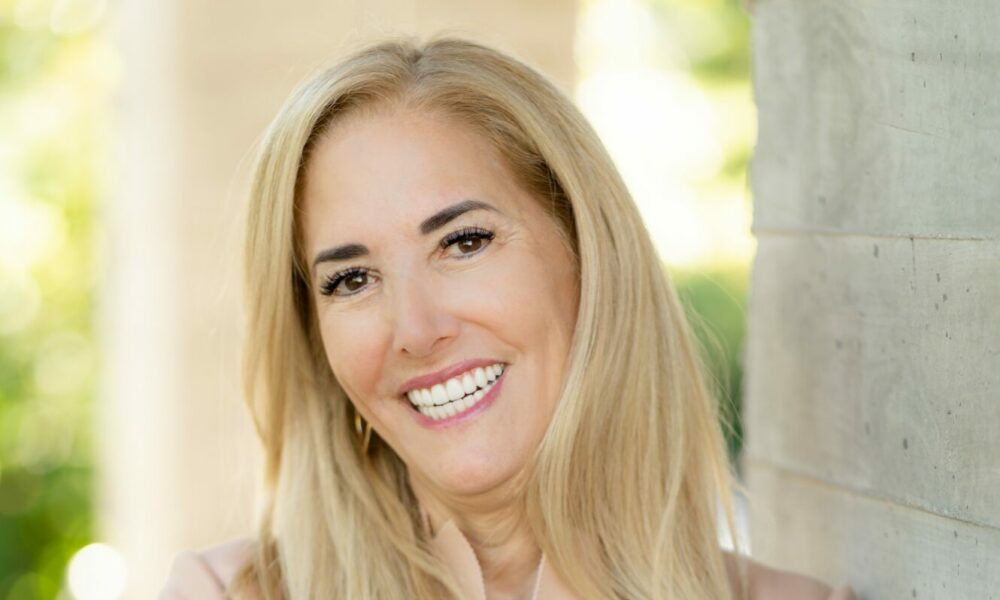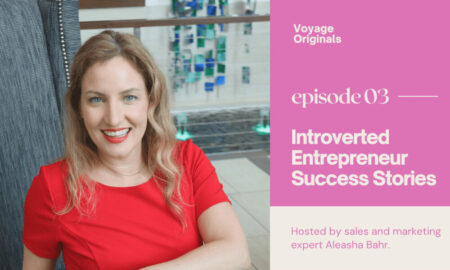

Today we’d like to introduce you to Leslie Goldman.
Hi Leslie, so excited to have you with us today. What can you tell us about your story?
Since my progression to this career was non-linear, it probably makes sense to talk about my passions to understand how I came to devote my time, energy and resources to female innovators.
My drive for amplifying female voices started early since I always knew that women were not a special interest group. My mom was involved in the women’s movement in the 60s. I love seeing the films of her talking about gender inequality and the fact that women can’t have babies in ovens. My father encouraged me to play baseball, a sport I loved when I was younger, and even had me pitch on an all-male Dad’s league team.
And both my parents were entrepreneurs. Mom ran a theater company for years, and I was so proud. I participated by being an usher every performance night. My father ran his own business and, during my lifetime, never actually worked for anyone but himself. So — I had the influence and the role models, it just took two brilliant go-getters – Stephanie and Diana – to give me the confidence that with them as partners, I too could be an entrepreneur.
I started my journey to venture capital investing in the usual way — as an aspiring opera singer. While it may not have been a training ground for an investor, it certainly taught me grit, determination and how to focus among distractions. There is almost nothing more vulnerable than standing on stage while people focus on and judge the quality of your voice.
In fact, I felt so vulnerable that I decided, if I were intent on putting myself “out there,” I’d do it using my brain rather than my voice. I went abroad (albeit to a first-world country) and I received my MA in Women’s Studies from the University of New South Wales in Australia. 🙂
Law school was next. As a lawyer, I thought I found the right career to use my voice. I loved structuring and facilitating all types of transactions for companies. I particularly loved the excitement of working with early-stage companies since they were starting with a blank slate and I was there to help them create structures, policies, a business plan, communications, relationships, an M&A strategy and anything else they needed. I effectively took the role of their outsourced GC. I developed an appetite for putting things together and “doing deals.”
As I felt the unbound opportunity and optimism emanating from entrepreneurs, I started to feel constrained as a lawyer. I was experiencing the “ennuie” that can set in after doing something for 25+ years, so instead of buying fancy cars, I started buying equity in private companies and ultimately ended up with 60 angel investments and 11 fund investments.
Of course, being a female angel investor can get very lonely as you have few female companions in a large room of angel investors. Even worse, I kept saying, why are the presenters all-white men with boards and advisors that mirror them? I met Stephanie Campbell and Diana Murakhovskaya — the brilliant partners I referred to earlier — at that epiphanic moment and realized we could be agents for change. We were hell-bent on moving the 2% needle of funding that is allocated to female founders, and the data suggested and still does, that focusing on women is a great strategy for producing alpha and impact.
I’m sure you wouldn’t say it’s been obstacle free, but so far would you say the journey have been a fairly smooth road?
I definitely made mistakes early as an angel investor since some of my decisions were merely because I knew the founder and wanted to help out. And some were made without diligence, background checks or any kind of reference. Just plain ole dumb and knee-jerk. I learned from those, however, and my collective investments since 2017 are tracking at an aggregate of about 3.5X. Note that that is multiple on invested capital (MOIC), not cash on cash as 54 of my 60 investments have not yet exited or drowned.
With The Artemis Fund, we are extraordinarily careful and selective. And we can be since we see over 3,000 female-founded companies annually, and we are investing in a total of 15 out of Fund I, and once raised, 15-20 out of Fund II.
By “careful,” I mean we do deep diligence on the companies, founders, customers, team, and market. Everyone one of our founders has gone through various degrees of bias as a result of pitching to male investors, and all of them have been tested by their circumstances. These women have created revenue, product market fit, a team, and delighted customers, while in some cases carrying and having babies, running a household, dealing with aging parents, being told they shouldn’t or couldn’t, or just otherwise having little economic or emotional support for what they’re doing. By the time they get in front of us, they are gritty, powerful, determined, confident, and pressure-tested, much like female fund managers, so we understand their struggles.
Thanks – so what else should our readers know about The Artemis Fund?
The Artemis Fund I was launched in 2019 by myself, Diana Murakhovskaya, and Stephanie Campbell. Our mission is to diversify wealth creation by investing in iconic female founders in fintech, e-commerce, and care-tech. Our investments expand and modernize access to “wealth,” as defined by the three female Artemis GPs. To us, “wealth” is financial stability and freedom, it is control of your time and schedule, it is the freedom to pursue your professional goals without sacrificing the health, safety, and happiness of your family. It is the choice to spend your wealth on the goods and services that match your values.
We are one of a handful of funds (a) with an exclusively female founding/managing team; (b) exclusively investing in women founders who are also the CEOs; (c) investing with an impact lens; (d) intentionally ensuring diversity in our portfolio (over-indexing on diverse and immigrant founders); (e) endeavoring to lead rounds and work closely with our founders through their growth stages as board members or board observers; (f) based on Texas (with a national reach). As a result, we are sought out by co-investors to participate in seed rounds. We let our founders speak to our work and our value-add. As our firm matures, we will let our track record speak for itself.
The Artemis Fund I closed at $15MM in early 2021 and we have seeded 11 (of 15) rapidly growing companies, with over 70% diverse (people of color and immigrants) female founders. We generally participate as lead or co-lead and take a board or board observer seat. Our TVPI is in the top quartile for 2019 vintage based on Cambridge research, and only increasing as 50% of our companies are set to have markups in the next 3-6 months.
Given our traction and the progress of deployment of Fund I, we are raising a $50M Fund II, with a first close in early 2022. With Fund II, we will continue to invest at the seed stage while providing direct co-investment opportunities for our LPs.
We are most proud of our portfolio companies and founders. Here are just a few examples of what we’re invested in:
UNest: Our very first investment in July 2019 was in www.UNest.co. Ksenia Yudina started by creating an app that allowed the other 99%, in 3 minutes, to set up a 529 college savings plan with as little as $25. Laser-focused on her user base (income levels between $30,000 and $90,000 annually) she pivoted from 529s to more general tax-advantaged investment accounts for parents. UNest saw their user base soar during COVID as surveyed families said that their #1 concern was saving for the education of their children.
We led the Seed round for UNest at a $6M pre/8M post-money valuation. Since then, UNest has had 3 additional rounds at higher valuations, with the last round (Series B round) at $120M post-money. Our fintech expert/Artemis advisor serves on the board, and I was officially added in the B round. UNest represents financial inclusion through access to education.
DressX: DressX, founded by Daria Shapovalova and Natalia Modenova in 2020, is the first multi-brand store of digital clothes. Their product adds virtual clothing to any image, making it look like the person is actually wearing the clothes, whether in Zoom, Snapchat, Instagram, TikTok, YouTube, or gaming. A key mission of DressX is to reduce the amount of CO2 and water emitted by fast fashion and the serial purchasing of clothes for a single-use digital media event. Their solution reduces waste and makes fashion accessible to more consumers and makes more consumers accessible to more designers.
GoodFynd: Goodfynd is a marketplace and payment platform for food trucks. Goodfynd has revolutionized the way food trucks interact with customers, allowing these small businesses to increase revenue and make a sustainable wage.
CNote: Cnote is a fintech company providing a fixed income impact product for enterprises, asset managers, foundations and other allocators of funds. CNote’s technology allows investment dollars to flow from the impact investor through fixed income loans into local communities or causes through CDFIs.
Is there anything else you’d like to share with our readers?
Women hold up half the sky. We all know that solving for problems created by financial exclusion requires inclusion of the other 50% of problem solvers. And we all should know that women are not a special interest group. At Artemis, we are doing our part to change the paradigm that has prevented inclusion of half the population, while creating alpha for those that join us in this journey.
Contact Info:
- Email: team@theartemisfund.com
- Website: www.theartemisfund.com
- Twitter: https://twitter.com/FundArtemis



Image Credits
Kit Peltier
Christa Elyce










